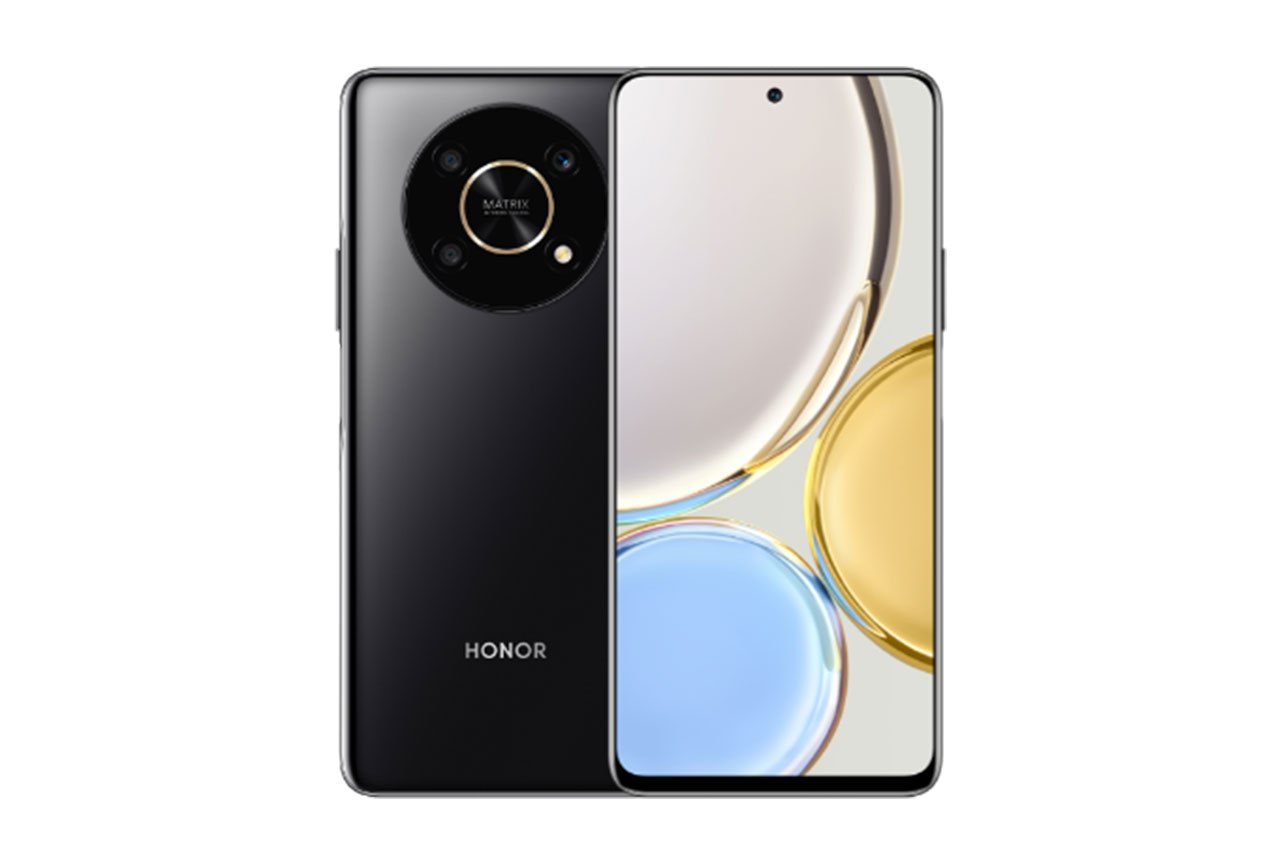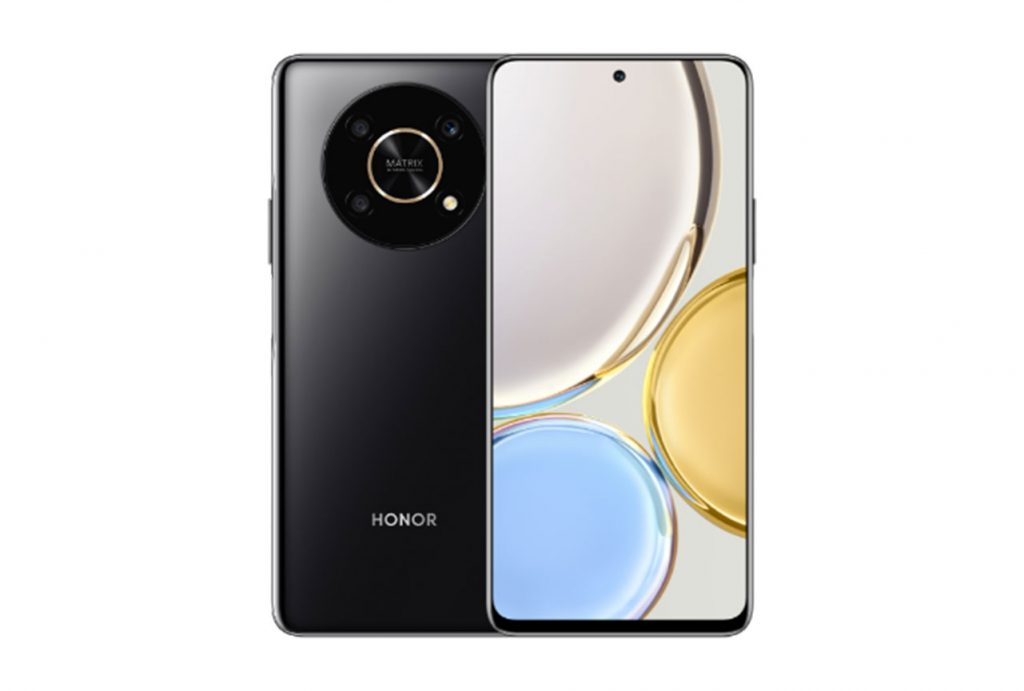Competing in the Advanced price segment, the Honor Magic4 Lite 5G is the most affordable option in Honor’s Magic4 line. The device is powered by a Snapdragon 695 chipset and comes with a 6.81-inch LCD display, 6GB of RAM and 128GB of storage.
The rear camera features a 48MP primary module, accompanied by 2MP depth and macro cameras. There are no ultra-wide or dedicated tele cameras. Video can be recorded in FullHD resolution.
Let’s see how the Honor Magic4 Lite 5G camera compares to the competition in the DXOMARK Camera tests.
Key camera specifications:
- Primary: 48MP sensor, 26mm equivalent focal length, f/1.8-aperture lens, PDAF
- Depth: 2MP sensor, f/2.4-aperture lens
- Macro: 2MP sensor, f/2.4-aperture lens
- LED flash
- 1080p/30fps video
About DXOMARK Camera tests: For scoring and analysis in our smartphone camera reviews, DXOMARK engineers capture and evaluate over 3000 test images and more than 2.5 hours of video both in controlled lab environments and in natural indoor and outdoor scenes, using the camera’s default settings. This article is designed to highlight the most important results of our testing. For more information about the DXOMARK Camera test protocol, click here. More details on how we score smartphone cameras are available here.
Test summary
Scoring
Sub-scores and attributes included in the calculations of the global score.
 Honor Magic4 Lite 5G
Honor Magic4 Lite 5G

61
camera
85
Huawei Pura 70 Ultra
Best: Huawei Pura 70 Ultra (130)
84
Apple iPhone 16 Pro
Best: Apple iPhone 16 Pro (130)
82
Huawei Pura 70 Ultra
Best: Huawei Pura 70 Ultra (125)
84
Xiaomi 15 Ultra
Best: Xiaomi 15 Ultra (125)
90
Huawei Pura 70 Ultra
Best: Huawei Pura 70 Ultra (117)
64
Xiaomi Redmi 12 5G
Best: Xiaomi Redmi 12 5G (82)
50
Huawei Pura 70 Ultra
Best: Huawei Pura 70 Ultra (85)
53
Apple iPhone 16 Pro
Best: Apple iPhone 16 Pro (93)
24
Xiaomi 15 Ultra
Best: Xiaomi 15 Ultra (128)
0
Huawei Pura 70 Ultra
Best: Huawei Pura 70 Ultra (122)
57
Oppo Find X8 Pro
Best: Oppo Find X8 Pro (116)
47
Oppo Find X8 Pro
Best: Oppo Find X8 Pro (120)
89
Huawei Pura 70 Ultra
Best: Huawei Pura 70 Ultra (120)
71
Oppo Find X6 Pro
Best: Oppo Find X6 Pro (118)
112
Apple iPhone 16 Pro
Best: Apple iPhone 16 Pro (120)
76
Xiaomi 12S Ultra
Best: Xiaomi 12S Ultra (86)
33
Apple iPhone 16 Pro
Best: Apple iPhone 16 Pro (119)
Use cases & Conditions
Use case scores indicate the product performance in specific situations. They are not included in the overall score calculations.
Outdoor
Photos & videos shot in bright light conditions (≥1000 lux)
Indoor
Photos & videos shot in good lighting conditions (≥100lux)
Lowlight
Photos & videos shot in low lighting conditions (<100 lux)
Friends & Family
Portrait and group photo & videos
Please be aware that beyond this point, we have not modified the initial test results. While data and products remain fully comparable, you might encounter mentions and references to the previous scores.
Position in Global Ranking

212
th
4. Apple iPhone 16 Pro Max
157
10. Apple iPhone 15 Pro Max
154
22. Honor Magic4 Ultimate
147
26. Apple iPhone 14 Pro Max
146
26. Motorola Edge 50 Ultra
146
26. Samsung Galaxy S25 Ultra
146
32. Samsung Galaxy S24 Ultra
144
34. Apple iPhone 13 Pro Max
141
34. Google Pixel 9 Pro Fold
141
38. Samsung Galaxy S23 Ultra
140
43. Tecno Camon 40 Pro 5G
138
45. Vivo X80 Pro (Snapdragon)
137
52. Samsung Galaxy S22 Ultra (Snapdragon)
135
52. Vivo X80 Pro (MediaTek)
135
59. Samsung Galaxy Z Fold6
133
59. Samsung Galaxy S24+ (Exynos)
133
59. Samsung Galaxy S24 FE
133
59. Samsung Galaxy S24 (Exynos)
133
69. Samsung Galaxy Z Flip6
132
70. Apple iPhone 12 Pro Max
131
70. Samsung Galaxy S22 Ultra (Exynos)
131
81. Samsung Galaxy Z Fold5
128
83. Asus Smartphone for Snapdragon Insiders
127
83. Samsung Galaxy Z Flip5
127
83. Samsung Galaxy S23 FE
127
88. Vivo X70 Pro (MediaTek)
126
92. Asus Zenfone 11 Ultra
125
92. Samsung Galaxy S22+ (Exynos)
125
97. Samsung Galaxy Z Fold4
124
100. Apple iPhone 11 Pro Max
122
105. Xiaomi Redmi Note 13 Pro Plus 5G
121
106. Samsung Galaxy Z Fold3 5G
120
106. Samsung Galaxy S22 (Exynos)
120
106. Xiaomi Redmi Note 13 Pro 5G
120
111. Xiaomi Redmi Note 14 Pro+ 5G
118
114. Apple iPhone 12 mini
117
114. Samsung Galaxy S21 Ultra 5G (Snapdragon)
117
114. Samsung Galaxy S21 FE 5G (Snapdragon)
117
114. Samsung Galaxy S21 5G (Snapdragon)
117
120. Vivo X60 Pro 5G (Snapdragon)
116
123. Motorola Edge 50 Neo
115
123. Samsung Galaxy S21+ 5G (Snapdragon)
115
123. Samsung Galaxy S21 Ultra 5G (Exynos)
115
133. Crosscall Stellar-X5
113
133. Xiaomi Redmi Note 12 Pro+ 5G
113
137. Samsung Galaxy Z Flip4
112
139. Samsung Galaxy Z Flip3 5G
111
139. Samsung Galaxy S21+ 5G (Exynos)
111
139. Samsung Galaxy S21 5G (Exynos)
111
144. Samsung Galaxy A55 5G
108
144. Vivo X60 Pro 5G (Exynos)
108
149. Samsung Galaxy A54 5G
107
150. Xiaomi Redmi Note 14 Pro 5G
106
153. Samsung Galaxy A35 5G
104
154. Motorola Edge 40 Neo
103
154. Xiaomi Redmi Note 14 5G
103
156. Xiaomi Redmi Note 12 Pro 5G
102
158. Motorola Edge 30 Pro
101
160. Apple iPhone SE (2022)
100
162. Motorola Moto g75 5G
96
168. Samsung Galaxy A34 5G
92
168. Samsung Galaxy A25 5G
92
172. Xiaomi Redmi Note 13 5G
91
174. Motorola Moto g85 5G
88
174. Samsung Galaxy A52s 5G
88
174. Samsung Galaxy A52 5G
88
178. Motorola moto g54 5G
85
178. Samsung Galaxy A33 5G
85
178. Samsung Galaxy A16 LTE
85
181. Honor Magic6 Lite (5300 mAh)
84
181. Xiaomi Redmi Note 14
84
184. Samsung Galaxy A15 5G
83
186. Samsung Galaxy A15 LTE
81
187. Samsung Galaxy A53 5G
79
189. Xiaomi Redmi Note 11 Pro 5G
78
191. Samsung Galaxy A16 5G
77
193. Motorola Moto G35 5G
75
193. Xiaomi Redmi Note 13
75
196. Honor Magic5 Lite 5G
74
198. Samsung Galaxy A23 5G
70
199. Xiaomi Redmi Note 12 5G
69
202. Motorola moto g34 5G
67
202. Samsung Galaxy A14 5G
67
204. Motorola Moto G62 5G
66
205. Xiaomi Redmi Note 11S 5G
65
207. Xiaomi Redmi Note 12
63
212. Honor Magic4 Lite 5G
61
214. Xiaomi Redmi Note 11
60
216. Crosscall Stellar-M6
59
223. Xiaomi Redmi 10 2022
51
225. Samsung Galaxy A22 5G
48
Position in Advanced Ranking

35
th
2. Xiaomi Redmi Note 13 Pro 5G
120
4. Xiaomi Redmi Note 14 Pro 5G
106
6. Xiaomi Redmi Note 14 5G
103
8. Xiaomi Redmi Note 12 Pro 5G
102
12. Samsung Galaxy A34 5G
92
12. Samsung Galaxy A25 5G
92
14. Xiaomi Redmi Note 13 5G
91
17. Samsung Galaxy A33 5G
85
19. Honor Magic6 Lite (5300 mAh)
84
23. Xiaomi Redmi Note 11 Pro 5G
78
24. Samsung Galaxy A16 5G
77
29. Samsung Galaxy A23 5G
70
30. Xiaomi Redmi Note 12 5G
69
33. Xiaomi Redmi Note 11S 5G
65
40. Samsung Galaxy A22 5G
48
Pros
- Fairly wide dynamic range
- Nice and stable white balance under indoor lighting
- Accurate autofocus in bright light
- Wide simulated aperture and nice blur gradient in bokeh mode
- Fairly low video noise
- Good video exposure in bright light and indoors
- Accurate and fast video autofocus
Cons
- Frequent exposures instabilities
- White balance casts and noise in low light
- Fusion artifacts
- No ultra-wide camera, lack of detail at tele settings
- Underexposure and lack of dynamic range in night shots
- Underexposure in low light video
- Highlight clipping and lack of detail in video
- Lack of saturation in video, especially in bright light
- Loss of fine detail in video
- Ineffective video stabilization
With a DXOMARK Camera score of 95, the Honor Magic4 Lite 5G does not make it anywhere close to the top of the Advanced ranking. The camera is capable of producing decent images that are a little desaturated in good light conditions, but things fall slightly apart in low light and other challenging conditions.
In still image mode, exposure is good in bright light and indoors, but we did see underexposed images when shooting in low light or in high-contrast situations. A cool blueish white balance cast can be visible in outdoor images, and yellow casts can appear in low light. Colors are desaturated in all conditions. The autofocus works pretty accurately, but a slightly narrow depth of field means subjects toward the back of a scene can be rendered soft.
The level of captured detail is slightly low in low light, and images lack fine detail. This is partly due to slow exposure times often resulting in some slight image blur. Noise is well managed on faces but noticeable on plain color backgrounds in most conditions. Our testers also observed some fusion artifacts, as well as ringing, noisy edges, and color quantization.
In this indoor image, dynamic range is quite wide, with good exposure on the face. White balance is neutral, the level of detail is fairly high, and noise on the face is well under control.
The camera’s main issue is exposure repeatability. HDR processing is not always triggered, which can result in quite different looking images across a series of consecutive shots. In this sample, you can see that the first and third shots show pretty good dynamic range, with decent detail in the sky in the background and good subject exposure. Tone compression results in a lack of contrast, though. The frame in the middle looks very different, with strong clipping in the background and an underexposed subject.
Frame 1: wide dynamic range, good subject exposure
Frame 2: limited dynamic range, underexposed subject
Frame 3: wide dynamic range, good subject exposure
The Honor does not feature an ultra-wide camera and has to make do without a dedicated tele. This means that digital zooming is used for zooming into the distance. As a result, tele images have poor detail. Dynamic range is limited as well, and portrait subjects are often underexposed. There is also image noise, and moving subjects tend to be blurred.
Honor Magic4 Lite 5G, long range tele
Honor Magic4 Lite 5G, crop: lack of detail, noise, underexposure on face
Samsung Galaxy A33 5G, long range tele
Samsung Galaxy A33 5G, crop: lack of detail, noise, slight underexposure on face
Xiaomi Redmi Note 10 Pro, long range tele
Xiaomi Redmi Note 10 Pro, crop: lack of detail, noise, slight underexposure on face
In video mode, noise is well under control, and the autofocus reacts fairly accurately and swiftly. However, video mode is held back by some fairly important issues, including a lack of stabilization and strong underexposure in low light.
In addition to aforementioned lack of stabilization, in this sample, we can see a lack of dynamic range resulting in strong contrasts as well as both shadow and highlight clipping. Color rendering on skin tones, greenery and sky is nicer on the comparison devices, and we can also see some exposure instabilities. On the plus side, noise is well under control, and the autofocus works well.
Honor Magic4 Lite 5G, strong camera shake, shadow, and highlight clipping, color rendering issues, underexposure
Samsung Galaxy A33 5G, good stabilization, nice contrast
Xiaomi Redmi Note 10 Pro, good stabilization, nice color and skin tones



 212th
212th 35th
35th









DXOMARK encourages its readers to share comments on the articles. To read or post comments, Disqus cookies are required. Change your Cookies Preferences and read more about our Comment Policy.